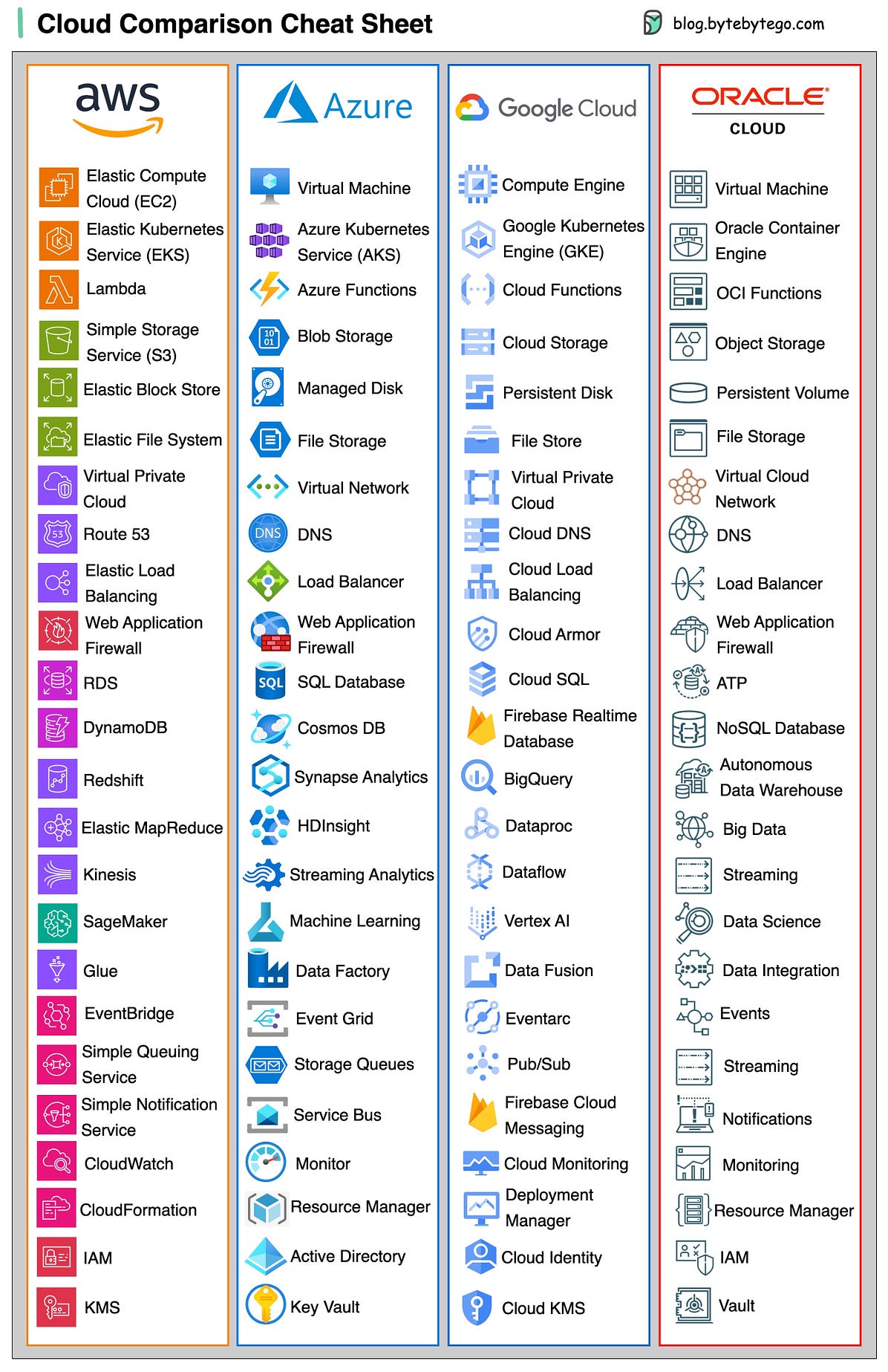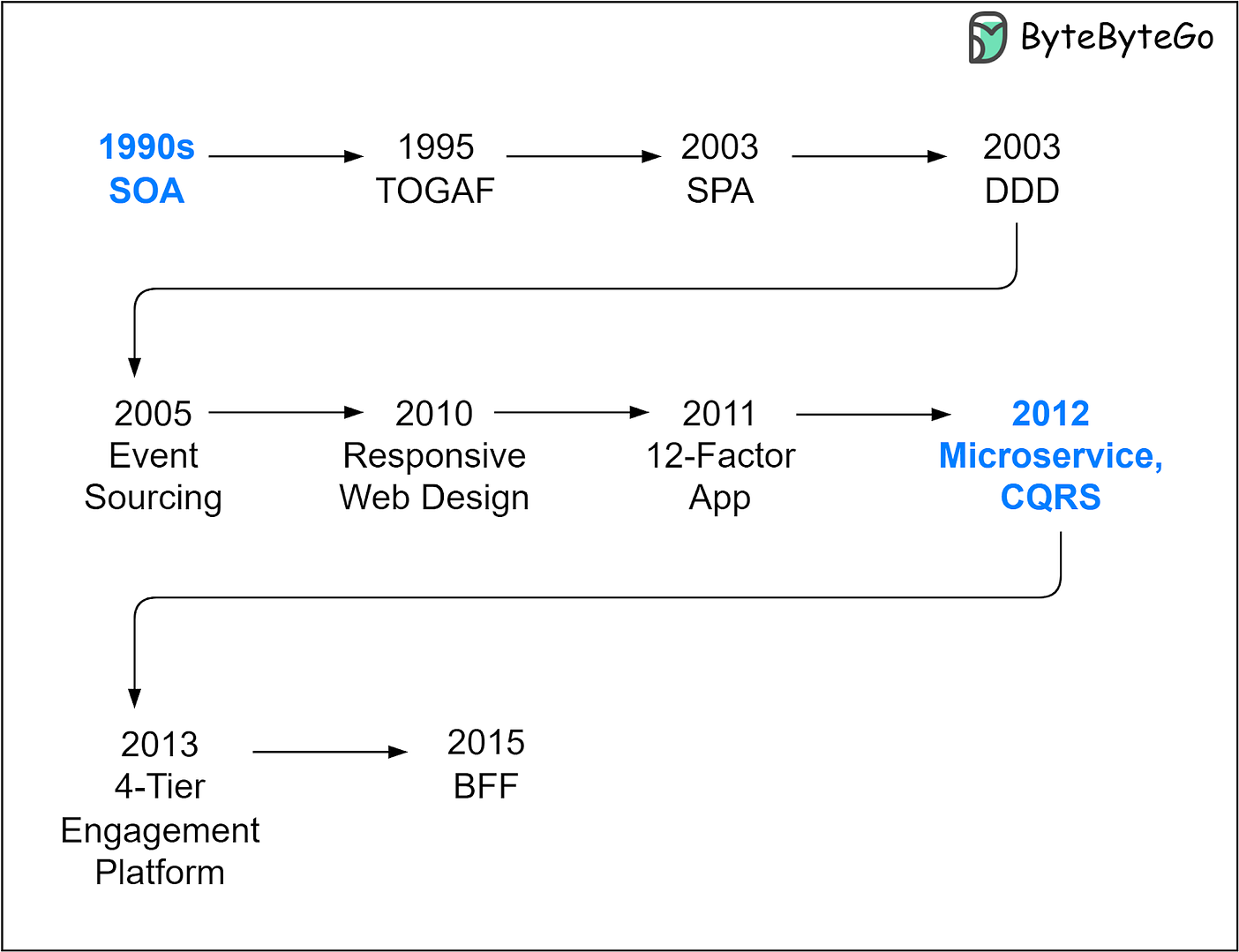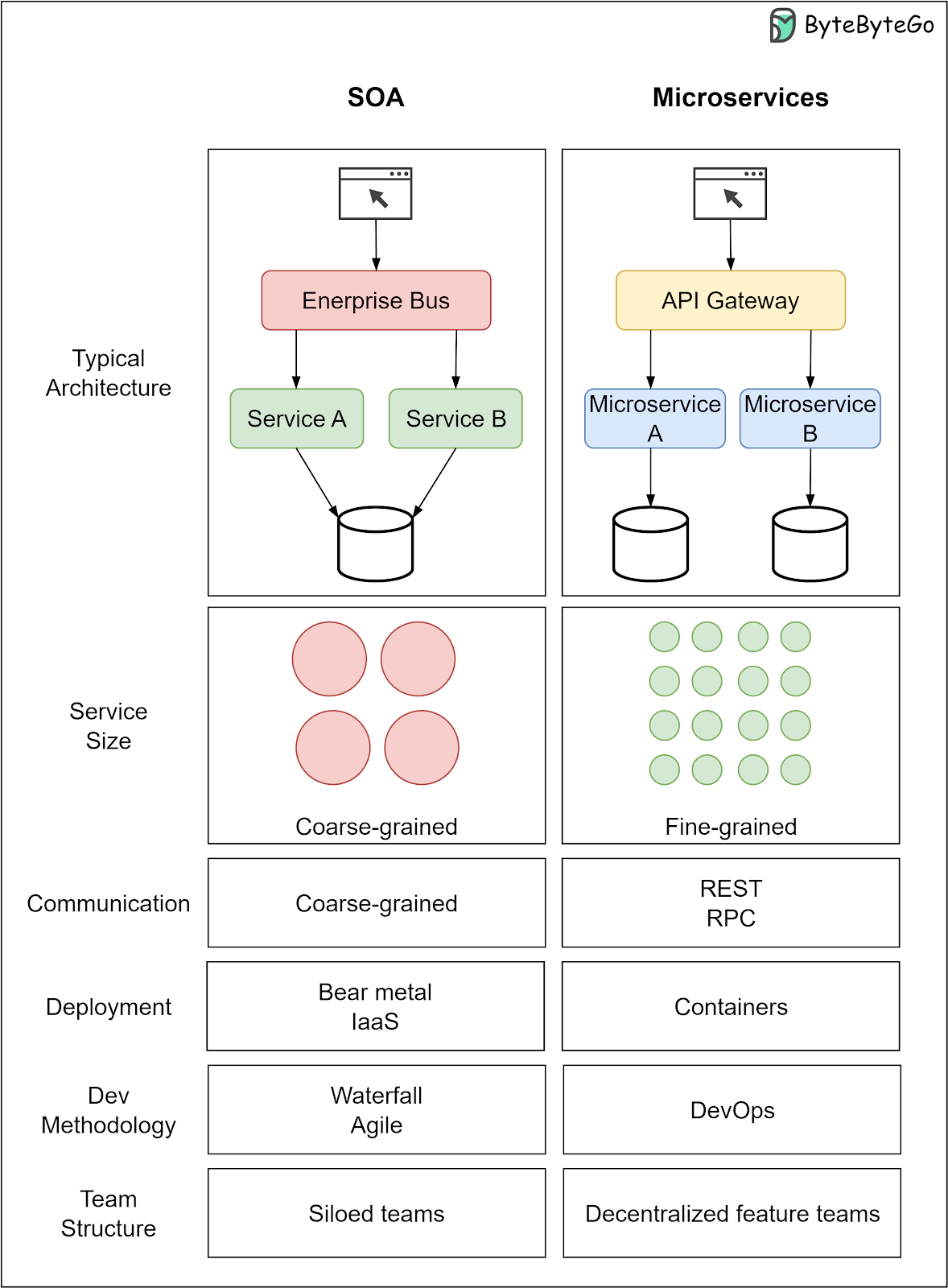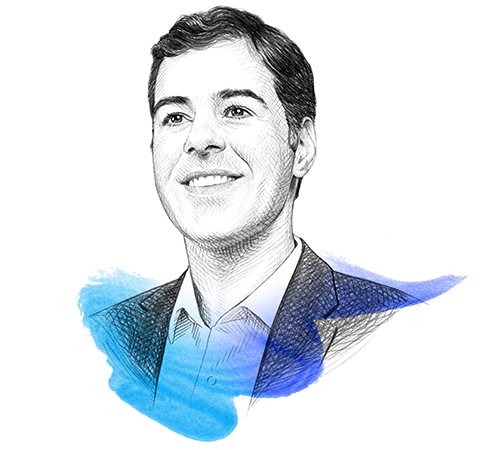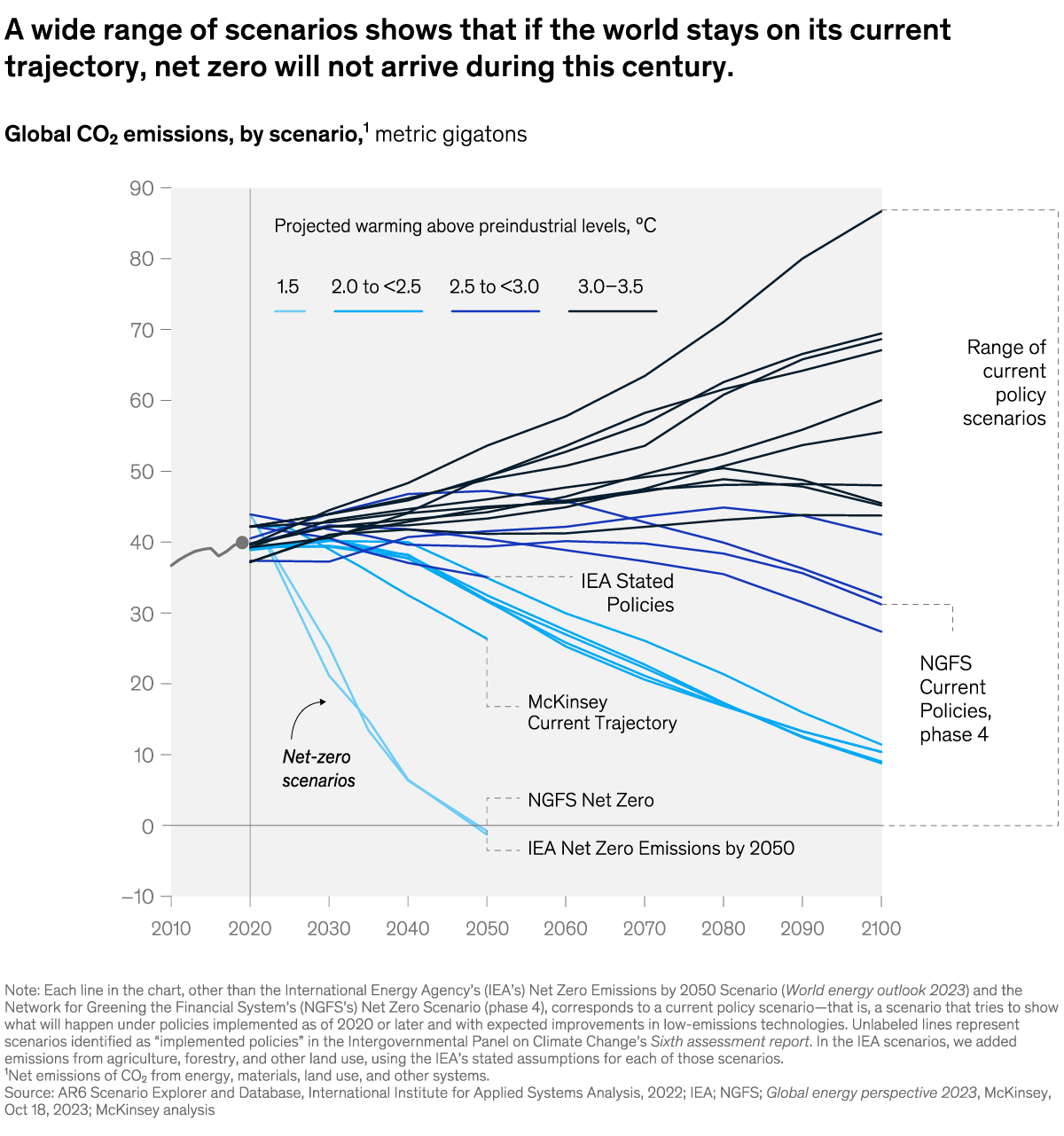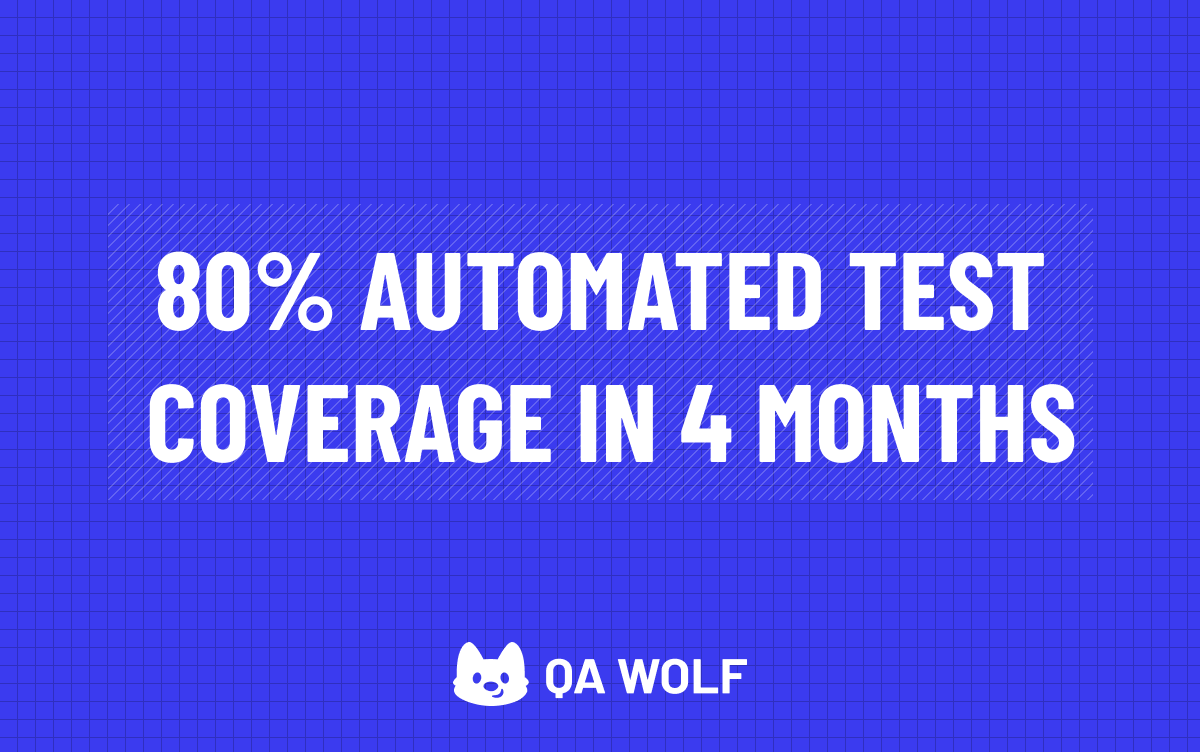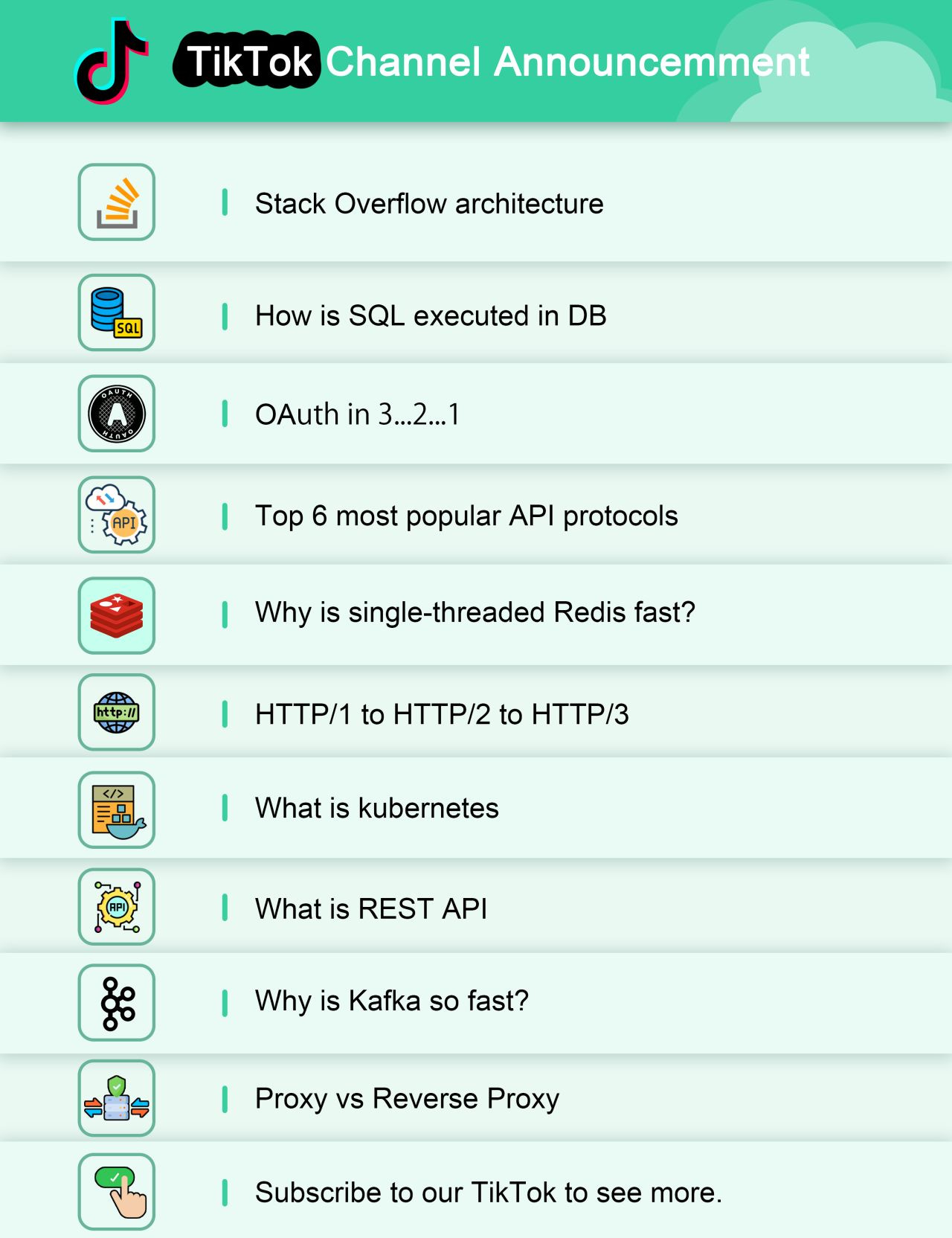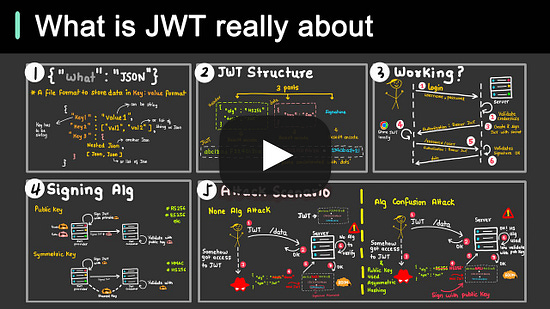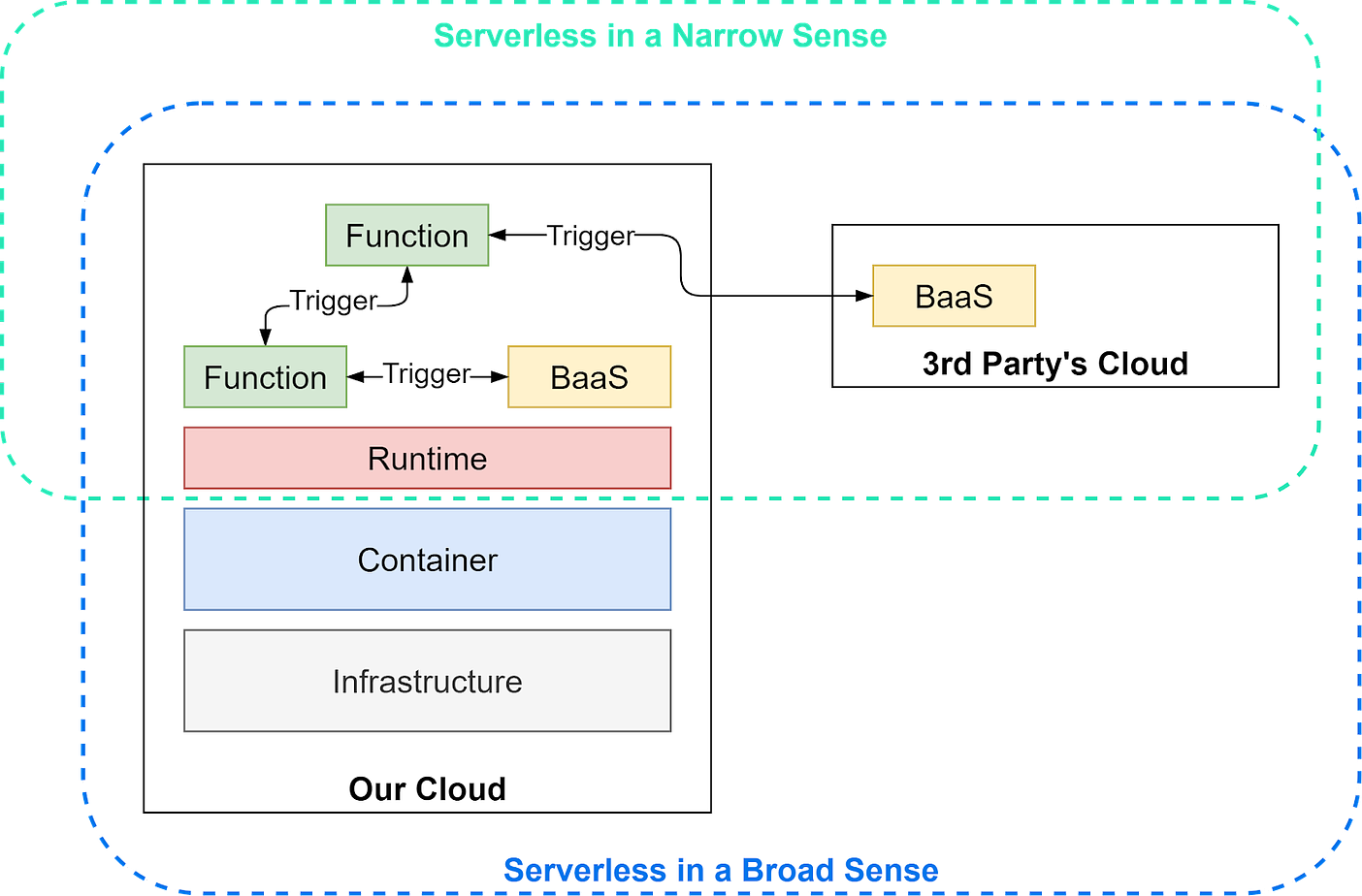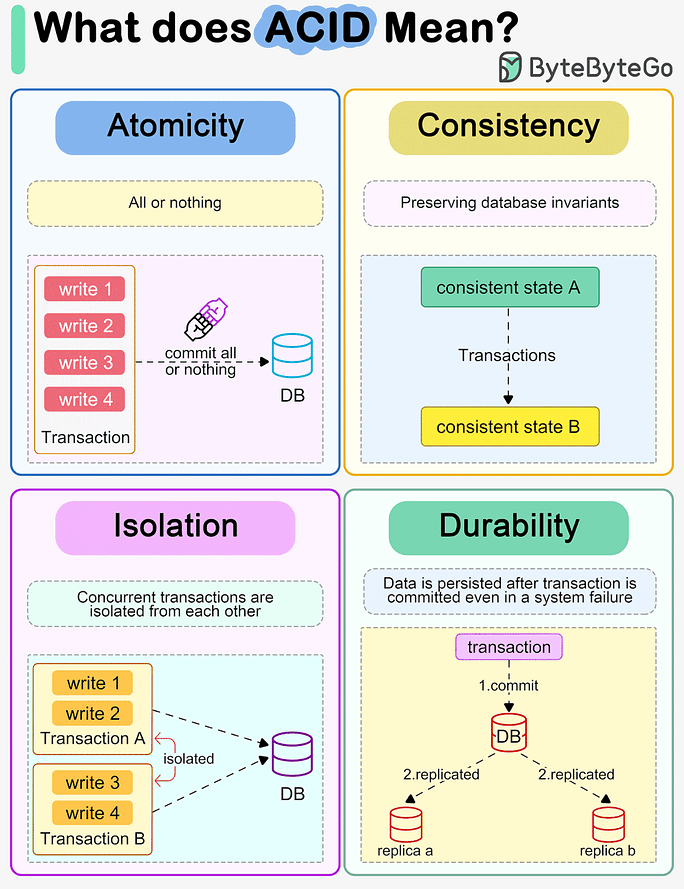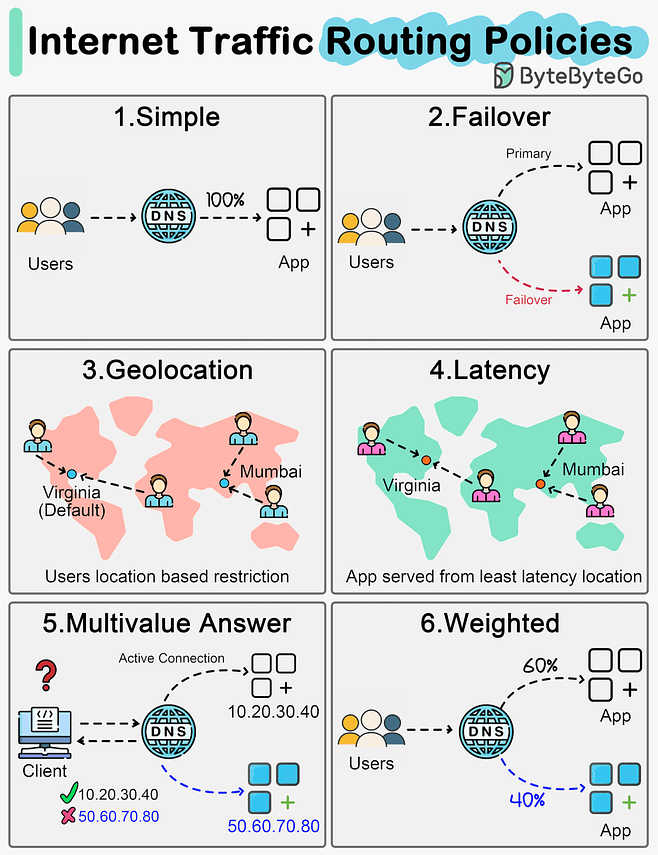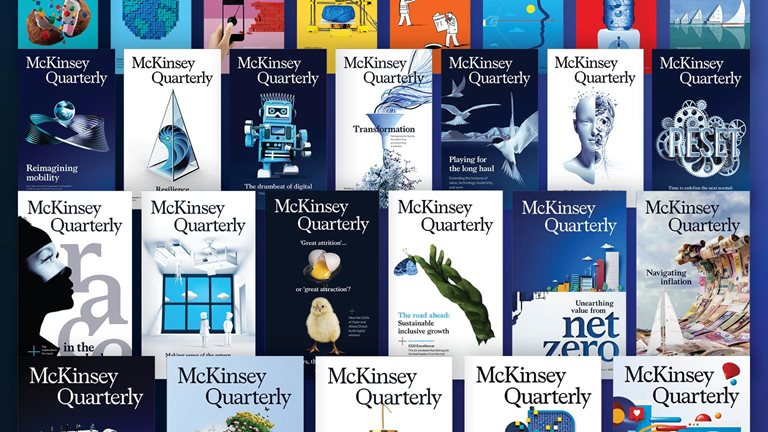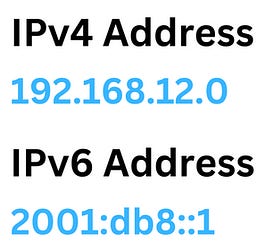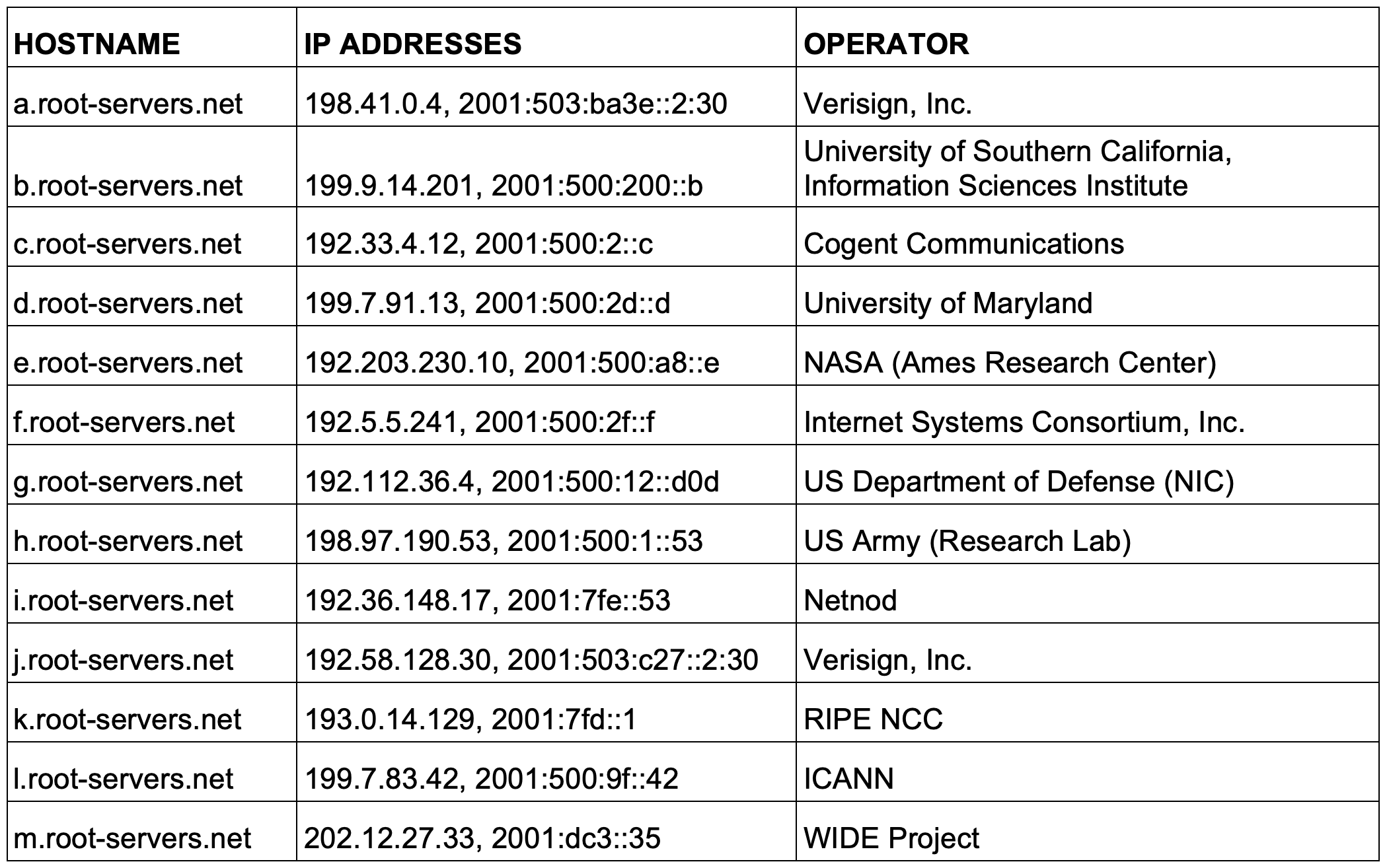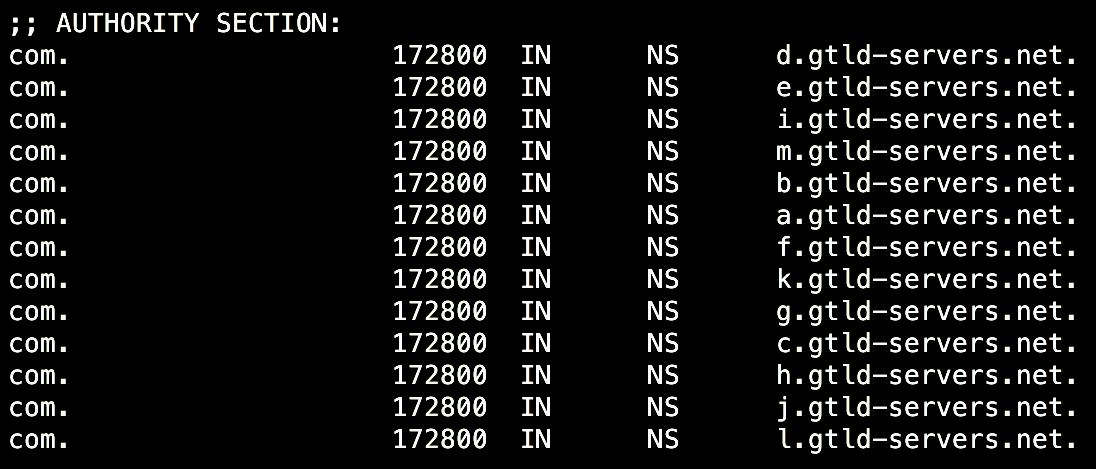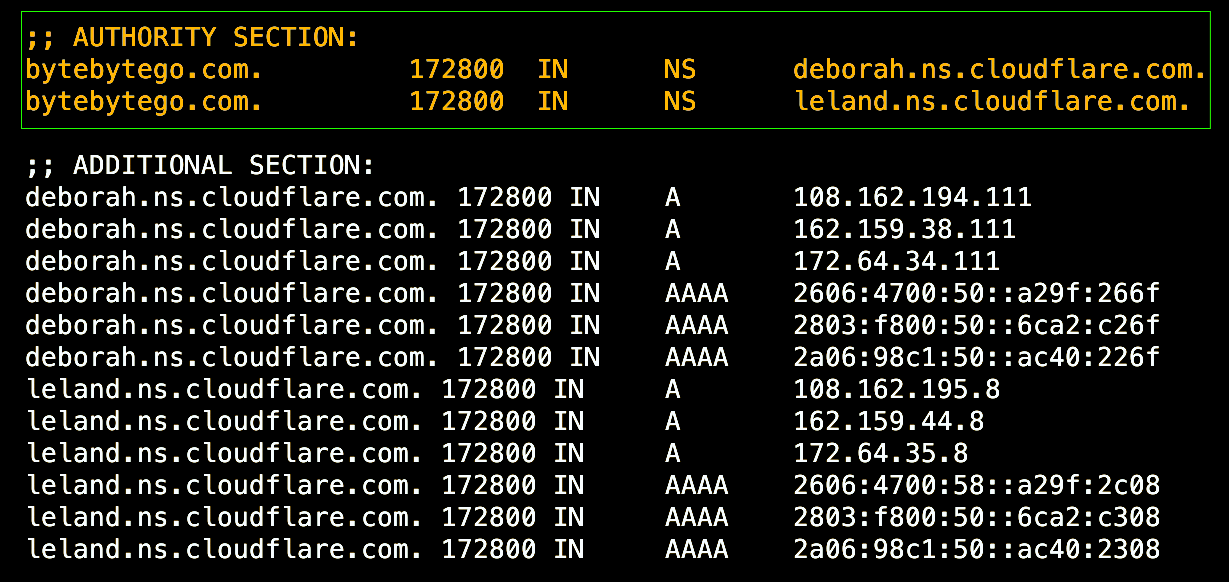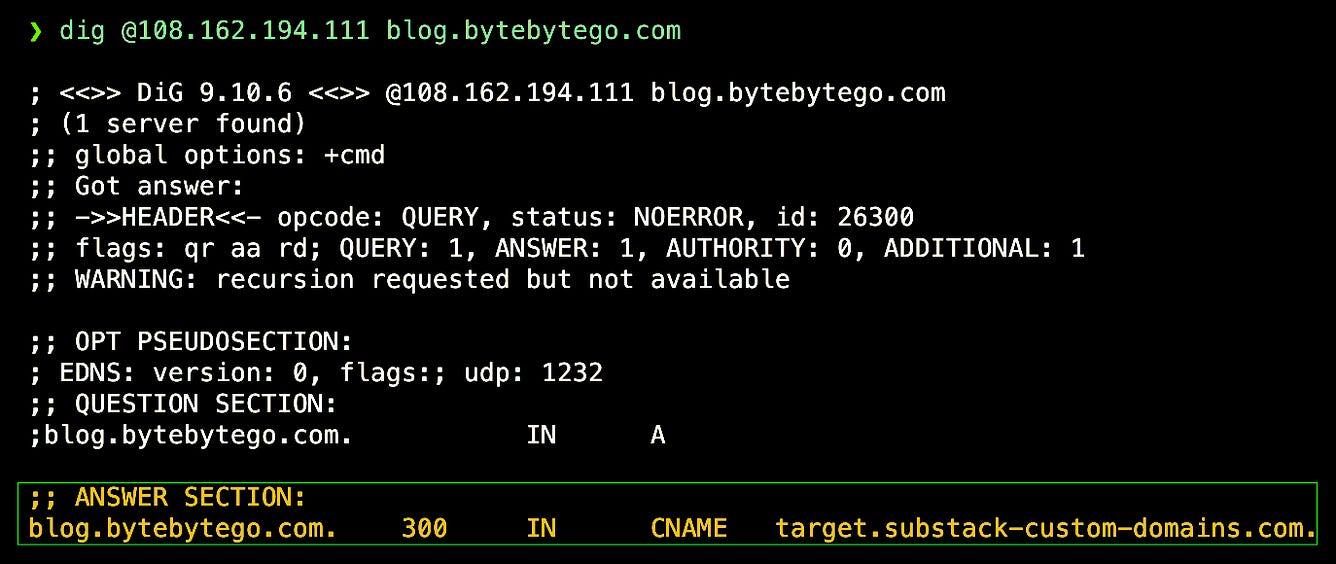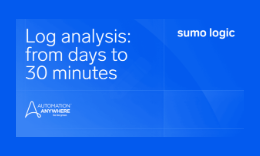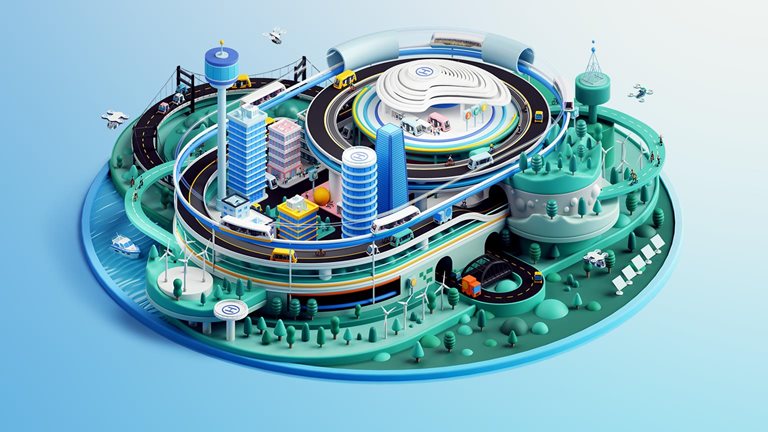Archives
- By thread 5360
-
By date
- June 2021 10
- July 2021 6
- August 2021 20
- September 2021 21
- October 2021 48
- November 2021 40
- December 2021 23
- January 2022 46
- February 2022 80
- March 2022 109
- April 2022 100
- May 2022 97
- June 2022 105
- July 2022 82
- August 2022 95
- September 2022 103
- October 2022 117
- November 2022 115
- December 2022 102
- January 2023 88
- February 2023 90
- March 2023 116
- April 2023 97
- May 2023 159
- June 2023 145
- July 2023 120
- August 2023 90
- September 2023 102
- October 2023 106
- November 2023 100
- December 2023 74
- January 2024 75
- February 2024 75
- March 2024 78
- April 2024 74
- May 2024 108
- June 2024 98
- July 2024 116
- August 2024 134
- September 2024 130
- October 2024 141
- November 2024 171
- December 2024 115
- January 2025 216
- February 2025 140
- March 2025 220
- April 2025 233
- May 2025 239
- June 2025 303
- July 2025 173
-
7 Microservices Interview Questions
7 Microservices Interview Questions
Microservices are a popular way to structure software systems today. As companies grow bigger and use more cloud computing, microservices help tackle complexity. In this issue, we review some key microservices concepts and common questions that come up in interviews: Forwarded this email? Subscribe here for moreLatest articles
If you’re not a subscriber, here’s what you missed this month.
The 6 Most Impactful Ways Redis is Used in Production Systems
The Tech Promotion Algorithm: A Structured Guide to Moving Up
To receive all the full articles and support ByteByteGo, consider subscribing:
Microservices are a popular way to structure software systems today. As companies grow bigger and use more cloud computing, microservices help tackle complexity.
In this issue, we review some key microservices concepts and common questions that come up in interviews:
What are microservices?
What issues do microservices aim to solve?
What new challenges do microservices introduce?
What are some popular microservices solutions?
How does monitoring and alerting work with microservices?
How are logs collected and analyzed?
What is a Service Registry?
Now let’s start with the definition of microservices.
1. What Are Microservices?
We can quote from Martin Fowler and Adrian Cockcroft on key aspects of microservices.
From Martin Fowler:
“The microservice architectural style is an approach to developing a single application as a suite of small services, each running in its own process and communicating with lightweight mechanisms, often an HTTP resource API. These services are built around business capabilities and independently deployable by fully automated deployment machinery. There is a bare minimum of centralized management of these services, which may be written in different programming languages and use different data storage technologies.”
From Adrian Cockcroft:
“Microservices are loosely coupled service-oriented architecture with bounded contexts.”
Key Aspects of Microservices
From the insightful definitions by Martin Fowler and Adrian Cockcroft, we can summarize these key aspects of a microservice architecture:
Decompose monolithic application into small, independent services. This allows different product teams to develop, test, and deploy services that align to specific business capabilities. Useful for large organizations to break down monolithic systems and improve productivity.
Loosely coupled services communicating via APIs. Frontend/backend components communicate via REST, whil inter-service communications use RPC for efficient request/response.
Carefully designed around bounded contexts. Each service has clear module boundaries and encapsulated domain logic to avoid tight coupling between services.
Enables effective DevOps practices. It is an important part of the microservice development methodology. Small, full-stack teams fully own specific services end-to-end. Containerization, automation, and container orchestration are used to effectively deploy microservices.
Horizontally scalable by design, resilient to failures. Services can scale out independently as needed. Built with fault tolerance in mind.
Decentralized governance and flexibility. Teams can choose whatever technology makes sense for their service.
Requires extensive monitoring and instrumentation due to:
Growth in services - As monoliths decompose into many independent services, the number of components to track grows quickly.
Infrastructure abstraction via containers/orchestrators - Runtime platforms like Kubernetes handle infrastructure. So monitoring must happen at the application code level using sidecars to aggregate logs, metrics and traces.
2. What Are the Differences Between SOA and Microservices?
Service-oriented architecture (SOA) and microservices architecture styles are important milestones in software architecture's evolution. The diagram below shows the progression of key architectural styles.
Service-oriented architecture emerged in the late 1990s to help manage enterprise software systems’ growing complexity. In the 2000s, SOA gained more industry attention and adoption by companies. However, SOA faced implementation complexity challenges.
Then in the 2010s, microservices architecture emerged in response to SOA’s limitations. Many large internet companies started adopting microservices to break down their services into smaller components. Microservices gained momentum with cloud computing’s evolution, as containers and orchestration tools made microservices' development, deployment, and monitoring easier.
Let’s compare their differences in more detail. The diagram below lists some of the differences.
The SOA architectural style offers coarse-grained services, typically a centralized approach where services are grouped by business functions and shared across multiple applications. The microservice style offers fine-grained service granularity through a decentralized approach where small, independent services perform specific functions within an application context.
The communication methods also evolve over time. SOA emphasizes uniform communication protocols and standardized interfaces for services to interact. Microservices lean towards diverse communication protocols and interfaces, often based on REST or message queues.
Cloud computing has evolved from Infrastructure-as-a-Service (IaaS) to Platform-as-a-Service (PaaS) to container-based PaaS. So microservice-based applications deploy on containers by default.
As the technical architecture changes, the organizational structure mirrors it (Conway’s law). So with microservices, the team structure requires multi-functional product teams. Each team focuses on a specific domain.
Keep reading with a 7-day free trial
Subscribe to ByteByteGo Newsletter to keep reading this post and get 7 days of free access to the full post archives.
A subscription gets you:
An extra deep dive on Thursdays Full archive Many expense it with team's learning budget Like
Comment
Restack
© 2023 ByteByteGo
548 Market Street PMB 72296, San Francisco, CA 94104
Unsubscribe
by "ByteByteGo" <bytebytego@substack.com> - 11:39 - 14 Dec 2023 -
A vibrant sector in manufacturing is packed with good jobs. What will it take to fill them?
On Point
Attracting younger workers to manufacturing
by "McKinsey On Point" <publishing@email.mckinsey.com> - 01:30 - 14 Dec 2023 -
Through the macroeconomic fog, CEOs are seeking growth
Re:think
Even amid uncertainty, CEOs focus on growth FRESH TAKES ON BIG IDEAS
ON BUSINESS BUILDING
Why more CEOs are prioritizing building new businessesAri Libarikian
For CEOs, this period of macroeconomic uncertainty is different. Unlike in previous downturns, such as the dot-com bust and the financial crisis, we’re seeing CEOs prioritize medium- and long-term growth and disruption rather than just buckling down for near-term resilience measures. The latest McKinsey Global Survey on new-business building bears this out: one out of every two CEOs said business building is a top three priority and their biggest lever for growth.
Companies nowadays realize that they can’t just prioritize near-term resilience. They need to keep looking around the corner and building for the future. They’re asking questions like: Where is disruption coming from? Where will my business find new ways to drive revenue and innovate in new markets with products, services, and ways of serving customers? Then they’re building businesses around the answers to position their organizations for the future. Accelerating this wave is the emergence of generative AI, which makes companies think about how they can leverage large language models and all their data to speed up new-business building.
Why build a new business as opposed to adding features to an existing product or service? In many cases, the opportunity is in a fundamentally different space, and you can’t just piggyback; you need a different type of organization or a different product, or to serve different customers by using the strengths of the core business to scale into new areas. Also, building a successful new business typically requires an operating model that’s different from that of the core business. It’s more like a start-up, where you’re fast and agile, you’re testing and learning, and you’re building new technologies rather than leaning on legacy systems and processes. When you piggyback off existing businesses, as much as you try to speed it up, your maximum speed is limited by the constraints of the core business.
These have long been truisms about business building, but gen AI makes this moment unique. Gen AI can create insights, synthesize information, and help people—both employees and customers—do things much more quickly, inexpensively, and efficiently. It lets businesses take all the data they have accumulated and analyze it to create insights that can then be turned into value-adds for customers. If the whole idea of business building is to move faster to deliver differentiated value or experience for customers, gen AI puts the process on steroids, allowing companies to move much faster. It’s a game changer.“The latest McKinsey Global Survey on new-business building found that one out of every two CEOs said business building is a top three priority and their biggest lever for growth.”
But scaling a start-up is very different from managing a large, mature business. It requires thinking about what will be disruptive over the next three, five, or ten years, not just over the next 24 months. Leaders need to think differently about talent and incentives. There’s also the challenge of running a multimodel organization, in which the core is moving at one speed and the new business is moving at another, with different sets of objectives, cultural traits, and ways of working. Managing these separate spheres at multiple speeds to get maximum value for the enterprise is becoming another core requirement for CEOs.
It takes openness to a different way of working and some patience. Companies are not going to see financial results in just three or six months. It’s going to take time. It also takes a willingness to work with different kinds of people, such as by hiring entrepreneurial and founder types rather than seasoned corporate executives. And leaders need to create organizational separation between the core business and the start-up, making sure they avoid any kind of political rancor between the two sides. At the end of the day, it takes a lot of intestinal fortitude. Many new ideas will fail. It’s not about batting a thousand. It’s about making the portfolio work and having a couple hits that can scale.
Interestingly, in our survey we found that CEOs put business building higher on their list of priorities than their direct reports do. That’s because direct reports typically have shorter-term objectives. They have goals they’re trying to meet and typically less incentive to look around the corner. The CEO’s challenge includes how to bring these people along on this journey.ABOUT THIS AUTHOR
Ari Libarikian is a senior partner in McKinsey’s New York office and the global leader of Leap, McKinsey’s business-building practice.
MORE FROM THIS AUTHOR
UP NEXT
McKinsey insights for 2024
What are the mindsets and strategies that enable companies to outpace peers on revenue and profit growth? How can CEOs make the most of their relationships with CMOs? Will generative AI change the real estate industry? Are there innovative systems to measure—and stimulate—productivity? McKinsey’s experts will rethink these and other crucial business and leadership topics when this column returns in 2024.
This email contains information about McKinsey’s research, insights, services, or events. By opening our emails or clicking on links, you agree to our use of cookies and web tracking technology. For more information on how we use and protect your information, please review our privacy policy.
You received this email because you subscribed to our McKinsey Quarterly alert list.
Copyright © 2023 | McKinsey & Company, 3 World Trade Center, 175 Greenwich Street, New York, NY 10007
by "McKinsey Quarterly" <publishing@email.mckinsey.com> - 03:11 - 13 Dec 2023 -
Join me on Thursday for troubleshooting applications and back end performance with APM 360
Hi MD,
It's Liam Hurrell, Manager of Customer Training at New Relic University, here. Are you ready to revolutionise your application monitoring and troubleshooting practices with our latest offering, New Relic APM 360? If so, you can register for the free online workshop that I'll be hosting on Thursday, 14th December at 10 AM GMT/ 11 AM CET.
APM 360 allows you to get a unified view of critical telemetry data across your stack and development lifecycle. Prevent issues before they escalate and troubleshoot faster with integrated infrastructure monitoring, error user impact analysis, and distributed tracing. In this workshop, I’ll show you how New Relic APM 360 can help eliminate blind spots with guided workflows.
You can find the full agenda on the registration page here. While we recommend attending the hands-on workshop live, you can also register to receive the recording.
Hope to see you then,
Liam HurrellManager, Customer TrainingNew Relic
This email was sent to info@learn.odoo.com as a result of subscribing or providing consent to receive marketing communications from New Relic. You can tailor your email preferences at any time here.Privacy Policy © 2008-23 New Relic, Inc. All rights reserved
by "Liam Hurrell, New Relic" <emeamarketing@newrelic.com> - 06:06 - 13 Dec 2023 -
Family-owned businesses often earn superior returns. New research tells us why.
On Point
Secrets of family-owned businesses’ success Brought to you by Liz Hilton Segel, chief client officer and managing partner, global industry practices, & Homayoun Hatami, managing partner, global client capabilities
•
Outside CEO onboarding. Most family-owned businesses run by multiple generations will eventually decide to bring in an external CEO. Successfully onboarding an outside CEO requires a deft touch, since the process must factor in the nuances of family member relationships, in addition to relatives’ relationships with other outside leaders. The first stage of effective onboarding is spent learning. Through activities such as reading annual reports, the CEO devotes a month to gaining essential insights about a company. [HBR]
•
Generating greater value. Resilient and adaptable, family-owned businesses (FOBs)—companies in which founders or descendants hold significant share capital or voting rights—have survived and thrived for decades. In fact, FOBs have created more value and impact than non-FOBs over the past decade, McKinsey senior partner Acha Leke and coauthors explain. McKinsey research finds that between 2017 and 2022, FOBs posted an average TSR of 2.6%, compared with 2.3% for non-FOBs.
— Edited by Belinda Yu, editor, Atlanta
This email contains information about McKinsey's research, insights, services, or events. By opening our emails or clicking on links, you agree to our use of cookies and web tracking technology. For more information on how we use and protect your information, please review our privacy policy.
You received this email because you subscribed to the On Point newsletter.
Copyright © 2023 | McKinsey & Company, 3 World Trade Center, 175 Greenwich Street, New York, NY 10007
by "McKinsey On Point" <publishing@email.mckinsey.com> - 01:47 - 13 Dec 2023 -
Decarbonizing buildings profitably can be achieved through AI-enabled means
On Point
A plan to decarbonize buildings Brought to you by Liz Hilton Segel, chief client officer and managing partner, global industry practices, & Homayoun Hatami, managing partner, global client capabilities
•
Energy-efficient buildings. Using energy more efficiently could help countries significantly cut greenhouse gas emissions, experts say. Stopping leaks and preventing devices from drawing power when not in use could allow energy systems to operate with less power, which would lower consumption of fossil fuels. Improving how well buildings are insulated could also reduce demand on cooling and heating systems. At COP28 in Dubai, about 120 countries have agreed to increase energy efficiency rates each year to 4%, from 2%, through the end of the decade. [Reuters]
•
Smarter decarbonization. Real estate companies often find it difficult and expensive to decarbonize buildings. But thanks to improved data and analytic methods, there is a better way. Machine learning, AI, and physics-based modeling can allow owners of real estate portfolios to create financially optimized plans for each building. For large portfolios, this new approach represents a more than 100-fold increase in the pace and scale of decarbonization planning compared with traditional methods, McKinsey senior partner Alastair Green and coauthors share.
— Edited by Belinda Yu, editor, Atlanta
This email contains information about McKinsey's research, insights, services, or events. By opening our emails or clicking on links, you agree to our use of cookies and web tracking technology. For more information on how we use and protect your information, please review our privacy policy.
You received this email because you subscribed to the On Point newsletter.
Copyright © 2023 | McKinsey & Company, 3 World Trade Center, 175 Greenwich Street, New York, NY 10007
by "McKinsey On Point" <publishing@email.mckinsey.com> - 01:36 - 12 Dec 2023 -
SmartBus - Parent App helping Parents to Track and Monitor their Children and School Bus
SmartBus - Parent App helping Parents to Track and Monitor their Children and School Bus
Get a 360-degree view of your children's school bus, pickups/drops, safety, driving patterns, routes, delays, etc.Our advanced school bus tracking software is designed to ensure the safety and efficiency of student transportation.
Key features of SmartBus parent app








Provide school buses with advanced tools to reduce workload and increase productivity.

Uffizio Technologies Pvt. Ltd., 4th Floor, Metropolis, Opp. S.T Workshop, Valsad, Gujarat, 396001, India
by "Uffizio Software Technologies Pvt Ltd" <sunny.thakur@uffizio.com> - 07:00 - 11 Dec 2023 -
What are you doing about your tech? A leader’s practical guide to tech implementation
Get practical Brought to you by Liz Hilton Segel, chief client officer and managing partner, global industry practices, & Homayoun Hatami, managing partner, global client capabilities
In the early days of the dot-com boom, many online businesses were unaware of the practical aspects of order fulfillment—and sometimes failed because of inefficient warehousing or inventory management practices. But even today’s more sophisticated organizations can endanger major initiatives by not paying attention to practical details. As more companies begin to implement new technologies, it’s important for leaders to examine whether their organizations have the tools, capabilities, and talent in place to ensure that operations run as planned. Here are some factors to consider.
Keeping the big picture in mind is essential when it comes to large-scale undertakings. But there are times when overlooking seemingly minor details can derail an entire project. To see how things really work in practice, prepare to invest both money and common sense, suggests McKinsey senior partner Rodney Zemmel. “Work with frontline people right from the beginning, before a line of code is written,” he says. It’s important to figure out if and how a technology will be used before adopting it. McKinsey senior partner Kate Smaje describes the case of a company that had developed an app for its warehouse operators to use on a tablet. “It was a beautiful front end, and they were so proud of it,” she says. “A member of my team very quietly, slightly timidly said, ‘Don’t the warehouse people wear gloves?’ And there was this sort of audible, ‘Oh, what on earth are we going to do now?’ moment.”
That’s the number of factors that are critical to realizing value from digital transformations, according to the results of a McKinsey Global Survey. A key activity that high-performing organizations do better than the rest is attracting and developing top tech talent—including both technology-savvy executives and frontline workers. In addition to creating a culture that nurtures tech talent, top performers are “more likely than other companies to integrate new hires in digital roles directly into the business rather than the IT function,” note the authors of the survey report.
That’s McKinsey partner James Kaplan in an episode of The McKinsey Podcast on the challenges organizations face in deriving value from cloud programs. A decade ago, he says, adopting cloud seemed to be a “no-brainer, similar to previous infrastructure improvements,” but since then, organizations have realized that cloud requires a considerable degree of change to IT architecture and business technology operating models. Leaders tasked with implementing cloud technology may be excited about its potential but will need a solid understanding of the payback on the investment, observes McKinsey partner Mark Gu. If not monitored carefully, the cost and complexity of moving to the cloud can multiply by “two to three times what you need,” he cautions.
“Whenever you develop a technology, there will be a secondary effect somewhere in the system that will prevent you from fully capturing the value,” observes McKinsey senior partner Eric Lamarre in an episode of our Inside the Strategy Room podcast. Lamarre cautions against deploying technology without identifying the business problem that needs to be solved. For example, an airline company found that a technology to calculate extra cargo space did not work as expected because of a problem on the ground: operators at the airport had not been trained to maximize pallet caseloads. Similarly, the technology creating the most buzz today, generative AI (gen AI), may not always be the best solution to a problem, says Lamarre. “It’s good to come back to the fundamentals—what are the pain points in the company?—then search broadly for the set of technologies that will address them,” he suggests. “Sometimes, that will be gen AI, but that doesn’t mean gen AI is the place to start.”
There’s little doubt that gen AI can improve workplace productivity—for example, we have found that the technology can help software developers code up to twice as fast. But leaders may need to educate themselves and their teams on how to manage gen AI’s drawbacks, particularly its tendency to “hallucinate”—present false or illogical information as reality. While some of these errors can be amusing, they can confuse users and be mistaken for fact. Organizations can help by teaching everyday users to create better prompts and ensuring that humans review gen AI output carefully.
Lead by being practical.
— Edited by Rama Ramaswami, senior editor, New York
Share these insights
Did you enjoy this newsletter? Forward it to colleagues and friends so they can subscribe too. Was this issue forwarded to you? Sign up for it and sample our 40+ other free email subscriptions here.
This email contains information about McKinsey’s research, insights, services, or events. By opening our emails or clicking on links, you agree to our use of cookies and web tracking technology. For more information on how we use and protect your information, please review our privacy policy.
You received this email because you subscribed to the Leading Off newsletter.
Copyright © 2023 | McKinsey & Company, 3 World Trade Center, 175 Greenwich Street, New York, NY 10007
by "McKinsey Leading Off" <publishing@email.mckinsey.com> - 04:47 - 11 Dec 2023 -
A guide to getting the net-zero transition right
On Point
Seven principles to guide decisions Brought to you by Liz Hilton Segel, chief client officer and managing partner, global industry practices, & Homayoun Hatami, managing partner, global client capabilities
•
Cost-competitive renewables. Technological advancements have made renewable energy much less costly. With solar and wind power becoming more competitive when compared with nonrenewable energy sources, it’s now possible to envision a carbon-free energy system. By 2030, global consumption of coal, natural gas, and oil is expected to reach its highest point, the IEA estimates. But with demand for natural gas and oil set to plateau well into that decade, achieving net-zero emissions by 2050 could still remain out of reach. [FT]
•
Off target. The world is making progress in cutting greenhouse gas emissions. Even so, humanity is not on track to limit global warming to below 2°C. McKinsey examined 23 “current policy” scenarios from the IPCC, McKinsey’s Global Energy Perspective 2023, the Network for Greening the Financial System, and the IEA. If emissions stay on their current trajectory, global emissions of CO2 would not reach net zero even by the end of the century, Sven Smit, chair of the McKinsey Global Institute, and coauthors explain.
— Edited by Belinda Yu, editor, Atlanta
This email contains information about McKinsey's research, insights, services, or events. By opening our emails or clicking on links, you agree to our use of cookies and web tracking technology. For more information on how we use and protect your information, please review our privacy policy.
You received this email because you subscribed to the On Point newsletter.
Copyright © 2023 | McKinsey & Company, 3 World Trade Center, 175 Greenwich Street, New York, NY 10007
by "McKinsey On Point" <publishing@email.mckinsey.com> - 02:51 - 11 Dec 2023 -
The week in charts
The Week in Charts
Net-zero goals, private equity’s role in insurance, and more Share these insights
Did you enjoy this newsletter? Forward it to colleagues and friends so they can subscribe too. Was this issue forwarded to you? Sign up for it and sample our 40+ other free email subscriptions here.
This email contains information about McKinsey's research, insights, services, or events. By opening our emails or clicking on links, you agree to our use of cookies and web tracking technology. For more information on how we use and protect your information, please review our privacy policy.
You received this email because you subscribed to The Week in Charts newsletter.
Copyright © 2023 | McKinsey & Company, 3 World Trade Center, 175 Greenwich Street, New York, NY 10007
by "McKinsey Week in Charts" <publishing@email.mckinsey.com> - 03:20 - 9 Dec 2023 -
EP89: What does ACID mean?
EP89: What does ACID mean?
This week’s system design refresher: ByteByteGo’s TikTok / Instagram Reels Channel Why is JWT popular? (Youtube video) What does ACID mean? Internet traffic routing policies 😘 Kiss bugs goodbye with fully automated end-to-end test coverage (Sponsored) Forwarded this email? Subscribe here for moreThis week’s system design refresher:
ByteByteGo’s TikTok / Instagram Reels Channel
Why is JWT popular? (Youtube video)
What does ACID mean?
Internet traffic routing policies
😘 Kiss bugs goodbye with fully automated end-to-end test coverage (Sponsored)
If you've tried to build automated test coverage in-house, you know it takes years to scale. Try QA Wolf instead - they get web apps to 80% test coverage in just 4 months. They will create and maintain your test suite in open-source Playwright (no vendor lock-in, you own the code), and provide unlimited parallel test runs on their infrastructure.
The best part: QA Wolf saves you money. QA Wolf has multiple case studies of customers saving at least $200k/year in QA engineering and infrastructure costs.
*BIG* announcement: we’ve re-launched our TikTok / Instagram reels channel!
The first video is already live, and we'll try to post new videos every week.
We'll be covering a wide range of topics, including:
Stack Overflow's shocking architecture
HTTP/1 -> HTTP/2 -> HTTP/3
How to avoid double charges?
Why is Kafka fast?
How to choose the right database?
What is REST?
What is GraphQL
What is gRPC
Proxy Vs Reverse Proxy
And more…
If you're interested in seeing more, make sure to subscribe to our TikTok channel and Instagram channel.
We are new to creating short videos and would appreciate your feedback :) Thank you.Why is JWT popular?
Latest articles
If you’re not a paid subscriber, here’s what you missed this month.
To receive all the full articles and support ByteByteGo, consider subscribing:
What does ACID mean?
The diagram below explains what ACID means in the context of a database transaction.
Atomicity
The writes in a transaction are executed all at once and cannot be broken into smaller parts. If there are faults when executing the transaction, the writes in the transaction are rolled back.
So atomicity means “all or nothing”.Consistency
Unlike “consistency” in CAP theorem, which means every read receives the most recent write or an error, here consistency means preserving database invariants. Any data written by a transaction must be valid according to all defined rules and maintain the database in a good state.Isolation
When there are concurrent writes from two different transactions, the two transactions are isolated from each other. The most strict isolation is “serializability”, where each transaction acts like it is the only transaction running in the database. However, this is hard to implement in reality, so we often adopt loser isolation level.Durability
Data is persisted after a transaction is committed even in a system failure. In a distributed system, this means the data is replicated to some other nodes.
Internet Traffic Routing Policies
Internet traffic routing policies (DNS policies) play a crucial role in efficiently managing and directing network traffic. Let's discuss the different types of policies.
Simple:
Directs all traffic to a single endpoint based on a standard DNS query without any special conditions or requirements.Failover:
Routes traffic to a primary endpoint but automatically switches to a secondary endpoint if the primary is unavailable.Geolocation:
Distributes traffic based on the geographic location of the requester, aiming to provide localized content or services.Latency:
Directs traffic to the endpoint that provides the lowest latency for the requester, enhancing user experience with faster response times.Multivalue Answer:
Responds to DNS queries with multiple IP addresses, allowing the client to select an endpoint. However, it should not be considered a replacement for a load balancer.Weighted Routing Policy:
Distributes traffic across multiple endpoints with assigned weights, allowing for proportional traffic distribution based on these weights.
Over to you: Which DNS policy do you find most relevant to your network management needs?
Like
Comment
Restack
© 2023 ByteByteGo
548 Market Street PMB 72296, San Francisco, CA 94104
Unsubscribe
by "ByteByteGo" <bytebytego@substack.com> - 11:35 - 9 Dec 2023 -
Cómo pueden los líderes tomar medidas sostenidas para la adaptación al cambio climático
Además, lo que distingue a las empresas con crecimiento e innovación Dados los retos climáticos actuales, la adaptación es ahora tan importante como la mitigación. Los líderes se reúnen para la COP28, la conferencia anual de las Naciones Unidas sobre el cambio climático que se celebra del 30 de noviembre al 12 de diciembre, por lo que lo invitamos a leer el artículo destacado de este mes de Alexis Trittipo, Hamid Samandari, Homayoun Hatami, Mekala Krishan, Philipp Koch y Carter Powis, de McKinsey. Los autores proponen diez requisitos clave para un enfoque sistemático de la adaptación climática, como adoptar una mentalidad de gestión del riesgo climático y establecer un apoyo institucional y un compromiso hacia prácticas que ayuden a afrontar los complejos retos actuales del cambio climático. Otros temas destacados de la edición de este mes son los siguientes:
•
Cómo las empresas pueden superar a sus homólogas en innovación y crecimiento centrándose en la aspiración, la activación y la ejecución.
•
Cómo desarrollar la resiliencia geopolítica.
•
El potencial de la IA generativa en el sector inmobiliario.
•
Consejos prácticos para ayudar a los chiefs of staff a maximizar el impacto de su función.
La selección de nuestros editores
LOS DESTACADOS DE ESTE MES

Empresas con crecimiento e innovación: Una vista desde la cima
Los estudios de McKinsey demuestran que centrarse en la aspiración, la activación y la ejecución puede ayudar a las empresas a superar en innovación y crecimiento a sus pares.
Invierta productivamente
Cómo desarrollar la resiliencia geopolítica
Las tensiones geopolíticas han ido en aumento, creando riesgos importantes para las empresas, sobre todo las que operan a escala internacional. Aquí se explica cómo planear para hacerles frente.
Prepárese
La IA generativa: Una guía para los directores financieros
¿Cómo deberían abordar los CFOs la IA generativa –en toda la empresa y en la función financiera– y qué pueden hacer ahora mismo para ascender rápidamente en la curva de aprendizaje?
Sea proactivo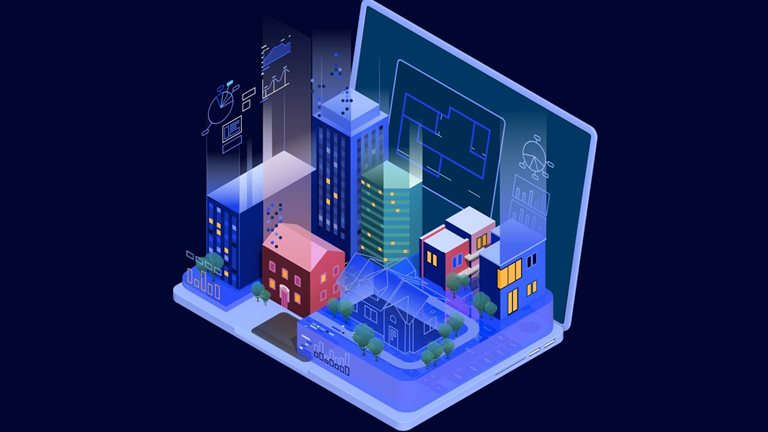
La IA generativa puede cambiar la industria inmobiliaria, pero el sector debe cambiar para aprovechar sus ventajas
El sector inmobiliario puede utilizar la IA generativa para convertir los datos de la industria en un tesoro en siete pasos.
Dé el salto a la IA generativa
Mirar alrededor de las esquinas: Cómo sobresalir como chief of staff
Un chief of staff puede ser decisivo para el éxito de un CEO y, al mismo tiempo, avanzar en su propia carrera. Aquí presentamos ocho consejos de quienes han dominado esta función.
8 mejores prácticas
Replantear la salud de los empleados: Más allá del agotamiento, hacia una salud holística
Una nueva encuesta del McKinsey Health Institute realizada en 30 países ofrece información sobre cómo las organizaciones pueden ayudar a crear un lugar de trabajo que priorice la salud física, mental, social y espiritual.
Mueva la agujaEsperamos que disfrute de los artículos en español que seleccionamos este mes y lo invitamos a explorar también los siguientes artículos en inglés.

McKinsey Explainers
Find direct answers to complex questions, backed by McKinsey’s expert insights.
Learn more
McKinsey Themes
Browse our essential reading on the topics that matter.
Get up to speed
McKinsey on Books
Explore this month’s best-selling business books prepared exclusively for McKinsey Publishing by Circana.
See the lists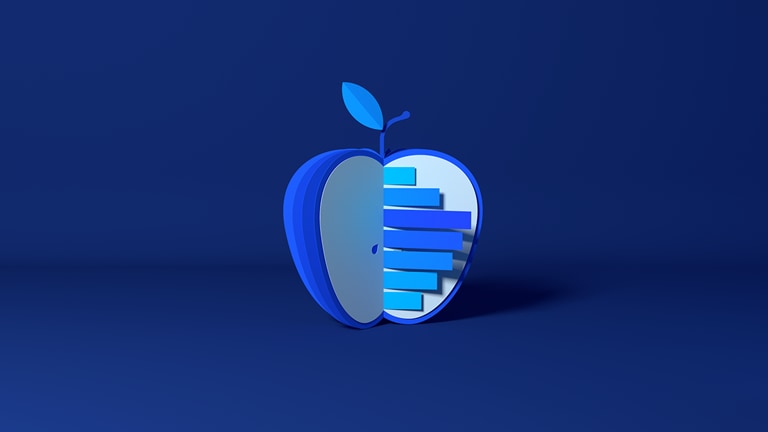
McKinsey Chart of the Day
See our daily chart that helps explain a changing world—as we strive for sustainable, inclusive growth.
Dive in
McKinsey Classics
Lack of certainty about the future is the very reason you need a strategy. Read our 2018 classic “How to confront uncertainty in your strategy” to learn more.
Rewind
The Daily Read
Our Daily Read newsletter highlights an article a day, picked by our editors.
Subscribe now— Edited by Joyce Yoo, editor, New York
COMPARTA ESTAS IDEAS
¿Disfrutó este boletín? Reenvíelo a colegas y amigos para que ellos también puedan suscribirse. ¿Se le remitió este articulo? Regístrese y pruebe nuestras más de 40 suscripciones gratuitas por correo electrónico aquí.
Este correo electrónico contiene información sobre la investigación , los conocimientos, los servicios o los eventos de McKinsey. Al abrir nuestros correos electrónicos o hacer clic en los enlaces, acepta nuestro uso de cookies y tecnología de seguimiento web. Para obtener más información sobre cómo usamos y protegemos su información, consulte nuestra política de privacidad.
Recibió este correo electrónico porque es un miembro registrado de nuestro boletín informativo Destacados.
Copyright © 2023 | McKinsey & Company, 3 World Trade Center, 175 Greenwich Street, New York, NY 10007
by "Destacados de McKinsey" <publishing@email.mckinsey.com> - 08:43 - 9 Dec 2023 -
Could your future commute be in an electric airplane?
On Point
Three experts on future air mobility Brought to you by Liz Hilton Segel, chief client officer and managing partner, global industry practices, & Homayoun Hatami, managing partner, global client capabilities
•
Cleaner skies. Electric vehicles are transforming the way people drive. Could electric airplanes soon revolutionize flying? In October, a US company successfully completed its first delivery of a battery-operated plane when it piloted its electric aircraft from Vermont to Florida, flying 1,730 miles. The electric plane, which is capable of vertical takeoff and landing, is one of many cutting-edge aircraft currently being developed by roughly 60 start-ups. The shift away from combustible fuels is set to intensify as aviation leaders aim for greater sustainability. [Bloomberg]
•
‘Ready for takeoff.’ From drones to electric vertical takeoff and landing (eVTOL) passenger aircraft, sustainable aviation, and new propulsion systems, future air mobility (FAM) has progressed rapidly over the past decade, McKinsey partner Robin Riedel shares on an episode of the podcast series Drivers of Disruption. “While it’s still early, it feels like we’re ready for takeoff as an industry,” says Riedel, who co-leads the McKinsey Center for Future Mobility and is a global leader within McKinsey’s Aerospace & Defense Practice.
— Edited by Belinda Yu, editor, Atlanta
Introducing Insights to Impact
Be among the first to subscribe to this free newsletter delivering a weekly roundup of analysis that’s influencing decision makers. Each Friday, we’ll offer insights across geographies, industries, and capabilities to help leaders identify new opportunities to spur innovation and growth, sustainably.
Click to subscribeThis email contains information about McKinsey's research, insights, services, or events. By opening our emails or clicking on links, you agree to our use of cookies and web tracking technology. For more information on how we use and protect your information, please review our privacy policy.
You received this email because you subscribed to the On Point newsletter.
Copyright © 2023 | McKinsey & Company, 3 World Trade Center, 175 Greenwich Street, New York, NY 10007
by "McKinsey On Point" <publishing@email.mckinsey.com> - 01:12 - 8 Dec 2023 -
Forward Thinking on the tricky business of removing carbon from our world with Nan Ransohoff
Move quickly New from McKinsey Global Institute

Forward Thinking on the tricky business of removing carbon from our world with Nan Ransohoff
Move quickly Prefer audio? Listen to the podcast, and explore past episodes of the Forward Thinking podcast. Subscribe via Apple Podcasts, Google Podcasts, and Spotify.


This email contains information about McKinsey's research, insights, services, or events. By opening our emails or clicking on links, you agree to our use of cookies and web tracking technology. For more information on how we use and protect your information, please review our privacy policy.
You received this email because you subscribed to our McKinsey Global Institute alert list.
Copyright © 2023 | McKinsey & Company, 3 World Trade Center, 175 Greenwich Street, New York, NY 10007
by "McKinsey & Company" <publishing@email.mckinsey.com> - 02:15 - 7 Dec 2023 -
Why the Internet Is Both Robust and Fragile
Why the Internet Is Both Robust and Fragile
The Internet blinked and Facebook disappeared. For nearly six hours in October 2021, Facebook’s apps vanished from the online world. In this issue, we unpack the anatomy of this severe outage to understand the deeper machinery powering the global Internet. Forwarded this email? Subscribe here for moreLatest articles
If you’re not a subscriber, here’s what you missed this month.
The 6 Most Impactful Ways Redis is Used in Production Systems
The Tech Promotion Algorithm: A Structured Guide to Moving Up
To receive all the full articles and support ByteByteGo, consider subscribing:
The Internet blinked and Facebook disappeared. For nearly six hours in October 2021, Facebook’s apps vanished from the online world. In this issue, we unpack the anatomy of this severe outage to understand the deeper machinery powering the global Internet.
Recap how DNS resolution works, from root servers to resolving a domain
Explain the border gateway protocol (BGP) - the glue holding the decentralized Internet together
Trace how packets traverse multiple networks to reach destinations
Reconstruct the sequence of events that caused Facebook's infrastructure to vanish
Discuss the power and fragility of the core protocols that keep information flowing online
By peering into the inner workings of DNS and BGP, we’ll shed light on the incredible infrastructure that keeps us all connected online. Let's dive into the fascinating world of protocols behind the scenes.
In a recent issue, we offered an in-depth exploration of DNS. This week, let’s take a step further. We’ll look at how the Internet itself is put together, using what we learned about DNS as an illustration.
To bring these abstract concepts to life, we’ll take a closer look at the Facebook global outage in October 2021 caused by their DNS servers disappearing from the map. So buckle up as we dive deeper into the mechanisms that keep us all connected online.
DNS Recap
Let’s quickly recap what we learned about DNS from our recent issue.
IP Addresses
We start with the concept that every computer on the Internet has a numerical IP address that it uses to communicate.
There are two types of IP addresses.
IPv4: A 32-bit number written out as four 8-bit numbers separated by dots (e.g., 192.168.1.1)
IPv6: A 128-bit number written in hexadecimal format (e.g. 2001:db8::1)
The internet is slowly moving towards adopting IPv6 more broadly because it supports a much bigger address space.
For simplicity, in this issue, we’ll focus on IPv4, since the dot-separated numbers are easier to work with for illustrative examples.
Now that we've covered the IP address basics, let's recap how DNS helps map domain names to these underlying IP addresses.
DNS Resolution Step-by-Step
When we type a domain name like blog.bytebytego.com into the browser, the computer has to look up the IP address for the name.
This is accomplished using DNS, the domain name system we explored in-depth last week.
Let’s recap how it works: The computer starts by contacting a recursive resolver, typically one run by the ISP or a major provider like Google’s 8.8.8.8 and Cloudflare’s 1.1.1.1.
The recursive resolver then queries the DNS hierarchy on our behalf, starting with the root servers.
These root DNS servers have well-known public IP addresses maintained by the Internet Assigned Numbers Authority. There are 13 IP addresses worldwide.
The servers are maintained and operated by different entities worldwide. They are corporations, educational institutions, governments, and various nonprofits. There is no single entity that controls all these root servers.
These 13 IP addresses span across about 1700 server instances as of this writing. That means each IP address is served by more than a single server. As we progress through this issue, you’ll learn more about the techniques that make it possible.
Everyone agrees these 13 IP addresses are the authoritative root servers. We can send a request to any one of them to look up an IP address.
Let’s go over an example of performing a DNS lookup from one of the root servers. We can use the dig command to ask a root server to resolve blog.bytebytego.com:
The IP address 202.12.27.33 is the root server m.root-servers.net. It returned “ANSWER: 0” - it doesn’t have the IP address for our target domain. But it provided “AUTHORITY: 13” - the 13 “.com” name servers it knows about.
As we learned from the last issue, the root servers do not hold the actual IP addresses for our target domain “blog.bytebytego.com”. Instead of providing an answer, it directed us to the 13 .com TLD name servers, as shown here:
It even gave us their IP addresses under the “Additional Section”. We’ll show a subset here:
The root server is saying it doesn’t have the answer, but to talk to one of the .com servers. So let’s ask one about blog.bytebytego.com. We’ll ask 192.43.172.30:
Again, no final answer, but we’re closer! It returned 2 authoritative name servers for bytebytego.com and their IP addresses:
Now, let’s query one of those authoritative servers:
Now we have the CNAME record pointing to the canonical name. We could continue querying to get the final IP address. We’ll leave it as an exercise for the readers.
How DNS Resolvers Simplify the Process
When the computer requests the IP address for “blog.bytebytego.com”, it offloads the lookup task to a DNS resolver.
If we run dig without specifying a server, it uses my configured resolver, which is usually maintained by the ISP. It directly returns three answers:
Keep reading with a 7-day free trial
Subscribe to ByteByteGo Newsletter to keep reading this post and get 7 days of free access to the full post archives.
A subscription gets you:
An extra deep dive on Thursdays Full archive Many expense it with team's learning budget Like
Comment
Restack
© 2023 ByteByteGo
548 Market Street PMB 72296, San Francisco, CA 94104
Unsubscribe
by "ByteByteGo" <bytebytego@substack.com> - 11:37 - 7 Dec 2023 -
Tis the season for an API book of fun ✨
Tis the season for an API book of fun ✨
Spark joy in your code this holiday season with Tyk's book of API fun - the festive edition!Celebrate the season of code with Tyk's book of API fun!
As we find ourselves knee-deep in tinsel and holiday excitement, we couldn't resist sharing something that's sure to inject a dose of eccentricity into your festive season – Tyk's book of API fun!
In this joyous compilation, you'll discover:
- Colourful API scenes: Bring APIs to life with your artistic talents.
- Holiday cracker crafting: Create your own cracker filled with API-themed humour.
- API jokes: Enjoy a collection that only developers will truly appreciate.
- Techy buzzword bingo: Engage in a fun game of bingo with an API twist.
- An API superhero comic: Illustrate and narrate a comic where APIs are the heroes.
- Gingerbread recipe for coders: Bake a gingerbread masterpiece inspired by APIs.
And don’t forget to swing by API-topia - it’s like Disneyland, but for APIs and without the long lines.
Download now and immerse yourself in a holiday season filled with coding cheer!
Tyk, 87a Worship Street, London, City of London EC2A 2BE, United Kingdom, +44 (0)20 3409 1911
by "Tyk" <communities@tyk.io> - 04:06 - 7 Dec 2023 -
The net-zero economy depends on key materials. Can leaders scale up supply?
On Point
Four key strategies to bridge the gap Brought to you by Liz Hilton Segel, chief client officer and managing partner, global industry practices, & Homayoun Hatami, managing partner, global client capabilities
•
Mining for EV minerals. Electric vehicles (EVs) are equipped with batteries made with metals and minerals sourced from all over the world. An EV that can be driven 200 miles on a single charge typically contains about 350 pounds of raw materials such as cobalt, graphite, and nickel. When excluding aluminum and steel, the amount of minerals that go into an EV is six times the amount that a conventional car needs, according to MIT. To meet surging demand for materials, leaders will need to establish new mines in addition to expanding existing ones. [WaPo]
•
More materials needed. The world’s ambitious journey toward a net-zero-emissions economy has sparked a “materials transition,” McKinsey senior partner Michel Van Hoey and coauthors explain. Climate technologies often require more physical materials for the same output when compared with their conventional counterparts during construction. For example, battery electric vehicles (BEVs) are typically 15 to 20% heavier than comparable internal combustion engine (ICE) vehicles. The world can only decarbonize as quickly as global materials supply chains can keep up with new and accelerating sources of demand.
— Edited by Belinda Yu, editor, Atlanta
Introducing Insights to Impact
Be among the first to subscribe to this free newsletter delivering a weekly roundup of analysis that’s influencing decision makers. Each Friday, we’ll offer insights across geographies, industries, and capabilities to help leaders identify new opportunities to spur innovation and growth, sustainably.
Click to subscribeThis email contains information about McKinsey's research, insights, services, or events. By opening our emails or clicking on links, you agree to our use of cookies and web tracking technology. For more information on how we use and protect your information, please review our privacy policy.
You received this email because you subscribed to the On Point newsletter.
Copyright © 2023 | McKinsey & Company, 3 World Trade Center, 175 Greenwich Street, New York, NY 10007
by "McKinsey On Point" <publishing@email.mckinsey.com> - 01:30 - 7 Dec 2023 -
From Hours to Minutes - Automation Anywhere Cut Analysis Time
Sumo Logic
Read the case study

Turn log data from foe to friend.
When logs are growing faster than budgets, but you're still being held to reliability and efficiency metrics, digital transformation can seem challenging.
But it doesn't have to be. Automation Anywhere was in that exact position and they were able to reduce analysis time from days to minutes, improve troubleshooting and increase data intake ROI. Check out the case study.
Learn more about Sumo Logic and the infinite power of log analytics.Sumo Logic, Level 9, 64 York Street, Sydney, NSW 2000
© 2023 Sumo Logic, All rights reserved.Unsubscribe 


by "Sumo Logic" <marketing-info@sumologic.com> - 08:00 - 6 Dec 2023 -
[Coming Dec 13] Deploy Secure ML Workloads on AKS Clusters
[Coming Dec 13] Deploy Secure ML Workloads on AKS Clusters
Learn how to build secure Kubeflow pipelines with a turnkey reference module.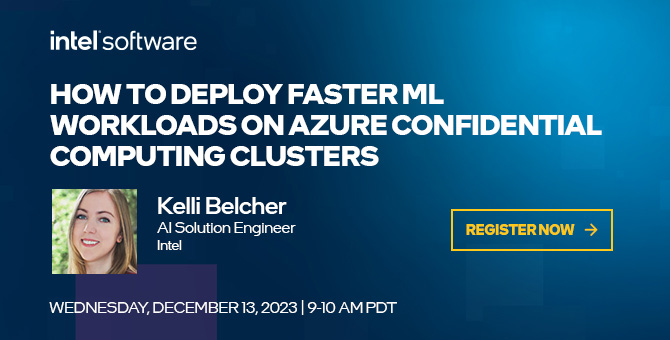
Build secure, scalable, and accelerated Kubeflow pipelines on an Azure Kubernetes Service (AKS) cluster using an Intel-optimized, cloud-native, open source reference module: Kubeflow Pipeline with XGBoost on Azure
You’ll learn how to:
- Configure Azure Cloud Services such as a resource group, container registry, and AKS cluster with a confidential computing node pool
- Install the Kubeflow software layer on an AKS cluster using a secure transport layer security (TLS) protocol
- Implement a full, end-to-end ML pipeline using an XGBoost model plus Intel AI software optimizations to predict credit risk—from data preprocessing to model inference
- Leverage the security of confidential computing nodes on an AKS cluster using Intel® SGX, and use Intel® Turbo Boost Max Technology to reach 3.5 GHz for AI acceleration
Skill level: Intermediate
Register now 

Featured software
Download the following tools standalone or as part of the Intel® AI Analytics Toolkit
Download oneDAL standalone or as part of the Intel ® oneAPI Base Toolkit





If you forward this email, your contact information will appear in any auto-populated form connected to links in this email.
This was sent to info@learn.odoo.com because you are subscribed to Webinars. To view and manage your marketing-related email preferences with Intel, please click here.
© 2023 Intel Corporation
Intel Corporation, 2200 Mission College Blvd., M/S RNB4-145, Santa Clara, CA 95054 USA. www.intel.com
Privacy | Cookies | *Trademarks | Unsubscribe | Manage Preferences
by "Intel Software Tools" <SoftwareTools@plan.intel.com> - 12:35 - 6 Dec 2023 -
COP28: Decarbonizing the mobility and built environment sectors
Your daily COP28 briefing Brought to you by Liz Hilton Segel, chief client officer and managing partner, global industry practices, & Homayoun Hatami, managing partner, global client capabilities
New from McKinsey & Company
In 2020, the transportation sector accounted for about 20 percent of global greenhouse-gas emissions, with more than 40 percent of the total coming from private cars, according to Kersten Heineke, Timo Möller, and coauthors in a recent McKinsey Quarterly article. Decarbonizing the mobility and built environment sectors requires a holistic strategy beyond tailpipe emissions. What will it take? On day 7 of COP28, check out these insights to understand what the sector can do to accelerate progress toward decarbonization.
Join our virtual COP28 program to watch live, in-depth, inspiring discussions that drive climate action and growth, and bookmark the Sustainability Blog for daily conference highlights.To see more essential reading on topics that matter, visit McKinsey Themes.
— Edited by Eleni Kostopoulos, managing editor, New York
This email contains information about McKinsey’s research, insights, services, or events. By opening our emails or clicking on links, you agree to our use of cookies and web tracking technology. For more information on how we use and protect your information, please review our privacy policy.
You received this email because you subscribed to our McKinsey Quarterly alert list.
Copyright © 2023 | McKinsey & Company, 3 World Trade Center, 175 Greenwich Street, New York, NY 10007
by "McKinsey & Company" <publishing@email.mckinsey.com> - 10:41 - 6 Dec 2023
